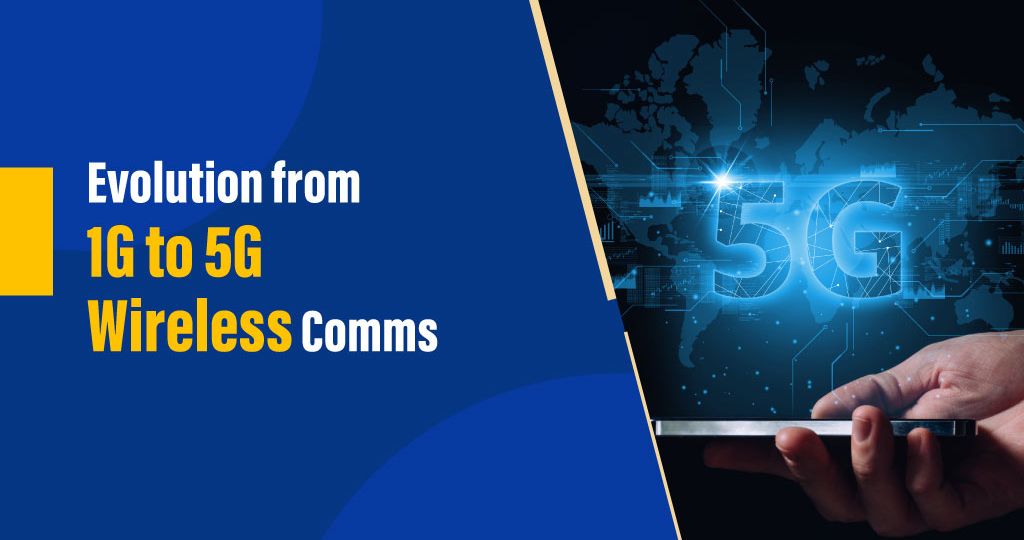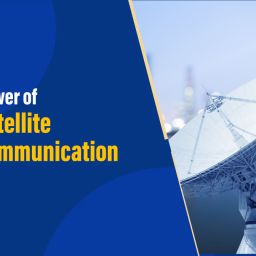
Eventually, there will be an important evolution in mobile technology. Human communication, work, and daily lives have evolved as a result of the rapid advancement of mobile technology, which started with simple telephone conversations and continued into the age of ultra-fast internet. Here is the article for the students who choose to pursue the electronics and communication engineering colleges in Tamil Nadu to know the innovations that prevail in the development of communication technology from the first generation to 5G.
Evolution of communication technology:
First-generation technology: First-generation, or 1G, wireless technology is a significant advancement in communication. It laid the basis for the incredible wireless technology that exists today and is the first step in bringing people together throughout the world.
1G technology, which was created in the early 1980s, provided analogue cell phone service. With the utilization of radio frequencies, users were able to send and receive signals during calls made via mobile phones.
The ability to make calls from anywhere was the primary feature of 1G technology. It has therefore gained popularity for use in professional as well as personal settings. It provided customers and those who needed to keep connected on the go with a great degree of convenience. However, it was unsuitable for more complicated applications, and data utilization was restricted.
Second Generation Technology: When compared to 1G, 2G, or the Second Generation of wireless technology, represents a significant advance. When it was first released in the early 1990s, 64 kbit/s of data transport were possible. Text messaging and the first digital mobile phones were also made possible by 2G. Customers using 2G could only send texts and make voice calls; no other functions were available.
GSM (Global System for Mobile Communications) served as the foundation for 2G technology and enabled digital encryption of communications. It enabled roaming between networks and allowed phone networks to track a user’s precise location. This made it possible for mobile commerce and the internet to grow rapidly. Even though 3G and 4G technologies have mostly replaced 2G technology, which played a key role in the creation of the contemporary mobile phone, 2G technology is still in use in certain regions of the world.
Third Generation Technology: Released in the late 1990s, Third Generation (3G) technology is an enhanced version of wireless communication technology. Significant improvements over 2G systems were made possible by this technology, including quicker rates for transmitting data and better multimedia features. With the advent of 3G technology, data rates have become increasingly important, enabling users to consume multimedia, access the Internet, and have video conversations.
- The ability to utilise high-speed data services, such as streaming audio and video and making video calls, is one of 3G technology’s primary features.
- It provides better coverage, enabling customers to maintain connectivity in places where 2G service could be poor.
- Higher data transfer rates are made possible with 3G technology, which makes it perfect for streaming multimedia content, downloading big files, and surfing the Internet.
- 3G technology uses less energy than 2G systems, meaning batteries can last longer.
Fourth-Generation Technology: The goal of fourth-generation (4G) technology was to give users more bandwidth and faster data speeds. It is a significant advancement in terms of speed and functionality as 3G’s replacement. With 4G technology, consumers may get data speeds of up to 100 Mbps, which is significantly quicker than 3G. That means it will just take a few seconds to download a video file.
When it comes to signal and connection reliability, 4G delivers a lot more than prior generations. Customers may take advantage of faster browsing and streaming due to its enhanced signal strength and data transfer speeds. Also, because 4G technology compresses audio signals using a different kind of voice codec, voice calls can now be made with higher quality. Large-scale document transmission, gaming, and video streaming are among the data-intensive activities that 4G networks are better suited to handle.
Fifth Generation Technology: The newest generation of wireless technology, known as 5G, is now being introduced. With data transmission speeds of up to 10 GB/s, it can process information 100 times quicker than 4G technology. With the use of this technology, consumers will be able to access virtual and augmented reality applications, stream videos in ultra-high resolution, and browse the internet faster.
5G technology’s ultra-fast speeds, minimal latency, enormous capacity, and enhanced dependability are its key characteristics. Up to 10 Gbps, or 100 times faster than the typical home broadband connection, can be achieved using 5G technology. This implies that consumers won’t experience any latency or buffering while using high-quality streaming services. It has minimal latency, which is crucial for virtual reality and gaming applications.
Conclusion:
Wireless technology has developed to meet ever-increasing demands. The goals for 6G technology include faster data transfers than ever before, reduced latency, and enhanced security. It also intends to improve AI-powered networks with sophisticated features like holographic communications and machine-to-machine (M2M) connectivity. These concepts of electrical communication are covered in the engineering syllabus, and you may learn them by enrolling in the top electronics and communication engineering colleges in Coimbatore. I hope this guide is useful.


